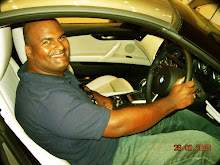Meltdown : The ALPS under pressure
Long a social hot spot, Europe's winter playground is now warming up for real.
Get a taste of what awaits you in print from this compelling excerpt.
This month the Winter Olympics will unfold in the ranges outside Turin, Italy, and television will replay the old Alpine themes—Heidi, yodeling, cheese with holes in it—while focusing on vistas in which nature still appears omnipotent and largely undisturbed.
That is an illusion. Arrayed across the heart of Europe, the Alps have been intensely used for centuries, and even today only 17 percent of their 74,000 square miles (190,000 square kilometers) are protected as parks. Their usable space is so limited that the average Alpine valley is an orgy of multitasking: factories, train tracks, hotels, houses, churches, ski lifts, farms, parking lots, lumberyards, stores, restaurants, and boutiques, all bundled together by swooping concrete parabolas of roads. And while the Alps may look empty on television, nearly 14 million people live there, two-thirds of them in urban areas and some in areas with a greater population density than the Netherlands.
But the sentimental stereotypes are hard to give up, and people almost instinctively blot out the lumber mills, construction cranes, and power lines. Andreas Goetz, executive director of the International Commission for the Protection of the Alps, recognizes this. "A lot of people come to the Alps looking for the old man with the beard, content with himself, smoking a pipe," he told me, a little ironically, in his solar-heated house in Switzerland. "We produce our chocolate and cheese and are happy all day long."
The old man is nowhere to be found. In another era Hans Gisler might have grown into the part. Instead this young Swiss sculptor left his farm in the remote mountain hamlet of Riemenstalden five years ago to seek his fortune in the prosperous small town of Altdorf, ten miles (16 kilometers) away down the valley, where he makes his living out of wood, metal, and his own talent.
Altdorf has a lot to offer: legend (it was where William Tell shot the apple off his son's head), industry (Merck pharmaceuticals), and a steady tourist business that attracts thousands of visitors a year. A number of them buy gallery pieces from local artists who, like Gisler, draw inspiration from the Alps overlooking Altdorf—blinding mountain bulwarks that seem to have been hacked out of the firmament with axes.
When I met him, Hans was preparing to carve a sculpture from the 23-foot-high (seven-meter-high) trunk of a century-old sequoia, which the city had recently cut down because its spreading roots were threatening nearby houses. We stood on a hillside overlooking the town, where he had placed this gigantic piece of raw material.
"I moved to Altdorf to be closer to my customers," he explained, "but I couldn't live without the high country." If he had been born 50 years earlier, he would almost certainly have had to remain on the family farm, satisfying his artistic drive by producing utensils, souvenirs, perhaps the occasional crucifix. Today, the prosperity that tourism has brought to the Alps has given him a chance to pursue his talent and make real money, rather than merely survive at the subsistence level his ancestors had to accept. But it doesn't mean he's become a city boy in one stroke. He goes back to help his brothers when he can, especially at hay-cutting time. The sound of the scythe, he said, is "music to my body and soul."
Source:http://www7.nationalgeographic.com









0 Comments:
Post a Comment
<< Home